Programming is a task that requires a lot of computational power. Programmers need a computer with a fast and reliable central processing unit (CPU) to ensure that their software runs smoothly and efficiently. The CPU is the brain of a computer, and it’s responsible for executing instructions and performing calculations.
In recent years, there has been a significant increase in demand for powerful CPUs that can handle the demands of programming tasks. This is because modern programming languages and software development tools require more processing power than ever before.
As a programmer, having a powerful CPU can save you a lot of time and increase your productivity. It can help you run multiple programs at once, compile code faster, and reduce the time it takes to run complex algorithms.
The choice of a CPU for programming is crucial because a slow and inefficient CPU can significantly impact your work’s quality and speed. Therefore, it’s essential to consider several factors when choosing a CPU, such as the number of cores and threads, clock speed, cache size, power consumption, and compatibility with your motherboard.
In this article, we’ll provide an overview of the best CPUs for programming and outline the factors you need to consider when choosing a CPU for your programming needs. By the end of this article, you’ll have a good understanding of what to look for in a CPU and which models are most suitable for your programming requirements.
Best CPU for programming
1. AMD Ryzen 9 5950X
The AMD Ryzen 9 5950X is the flagship processor of AMD’s Ryzen 5000 series and is considered one of the most powerful CPUs currently available on the market. It is designed for demanding workloads, including video editing, 3D rendering, and gaming.
The Ryzen 9 5950X features a total of 16 cores and 32 threads, making it an ideal choice for programming tasks that require high levels of processing power. It also boasts a base clock speed of 3.4 GHz, which can be boosted up to 4.9 GHz when using Precision Boost 2 technology.
The CPU is based on AMD’s 7nm manufacturing process and features a massive 72MB of L3 cache, which allows it to quickly access frequently used data. The 5950X has a TDP of 105W, which is slightly higher than its predecessor, the Ryzen 9 3950X, but this is offset by its impressive performance gains.
In terms of performance, the Ryzen 9 5950X is a powerhouse. It outperforms most of its competitors in both single-core and multi-core benchmarks, making it ideal for running heavy workloads such as video editing, rendering, and scientific simulations. It also offers excellent gaming performance, with a high clock speed that allows it to run even the most demanding games smoothly.
The Ryzen 9 5950X is also highly efficient, with impressive power consumption that is well-suited for both personal and professional use. It also features support for PCIe 4.0, which allows for faster data transfer rates and improved overall system performance.
Overall, the AMD Ryzen 9 5950X is a top-of-the-line CPU that offers exceptional performance and reliability. Its high number of cores and threads, impressive clock speeds, and large cache size makes it ideal for programming tasks that require significant processing power. If you’re looking for a CPU that can handle even the most demanding workloads, the Ryzen 9 5950X is an excellent choice.
Specifications
- CPU Cores: 16
- Threads: 32
- Base Clock: 3.4 GHz
- Max Boost Clock: 4.9 GHz
- Total L2 Cache: 8 MB
- Total L3 Cache: 64 MB
- TDP: 105 W
- PCIe 4.0 lanes: 24
- Memory Support: DDR4-3200
- Socket: AM4
2. AMD Ryzen 9 5900X
The AMD Ryzen 9 5900X is a powerful CPU from AMD’s Ryzen 5000 series that offers excellent performance for a range of applications, including programming, video editing, and gaming. It features 12 cores and 24 threads, with a base clock speed of 3.7 GHz and a boost clock speed of 4.8 GHz, making it a great option for high-performance workloads.
The 5900X is built using AMD’s 7nm manufacturing process, and it has a massive 70MB of L3 cache, allowing it to quickly access frequently used data. It also has a TDP of 105W, which is slightly higher than its predecessor, the Ryzen 9 3900X, but the increased performance more than justifies this.
In terms of performance, the Ryzen 9 5900X is one of the best CPUs on the market. It offers significant improvements in both single-core and multi-core performance compared to its predecessors, thanks to its new Zen 3 architecture. It’s also an excellent choice for gaming, thanks to its high clock speed and low latency.
The 5900X is highly efficient, with power consumption that’s well-suited for both personal and professional use. It also features support for PCIe 4.0, which allows for faster data transfer rates and improved system performance. This makes it a great option for tasks that require fast data transfer, such as video editing.
Specifications
- Cores: 12
- Threads: 24
- Base clock speed: 3.7 GHz
- Max boost clock speed: 4.8 GHz
- Cache: 70MB
- TDP: 105W
- Socket: AM4
- Fabrication: TSMC 7nm FinFET
- Memory support: Dual-channel DDR4-3200
- PCIe support: PCIe 4.0 x16
3. Intel Core i9-11900K
The Intel Core i9-11900K is the flagship CPU from Intel’s 11th generation “Rocket Lake” lineup. It features 8 cores and 16 threads, with a base clock speed of 3.5 GHz and a boost clock speed of up to 5.3 GHz. It’s built on Intel’s 14nm process, which is a bit of a departure from the company’s usual focus on miniaturization.
One of the key features of the i9-11900K is its high single-core performance. It’s one of the fastest CPUs on the market when it comes to single-threaded performance, which makes it a great choice for tasks that require a lot of single-core processing power, such as gaming or video editing. However, its multi-core performance lags behind that of some of its competitors, such as AMD’s Ryzen 9 5900X.
In terms of power consumption, the i9-11900K has a TDP of 125W, which is on the high side. It also requires a Z590 motherboard, which can be more expensive than other motherboard options. However, it does feature support for PCIe 4.0, which allows for faster data transfer rates.
One area where the i9-11900K excels is in its overclocking capabilities. It can be easily overclocked to higher clock speeds, which can further increase its performance. However, this can also lead to higher power consumption and increased heat output, so it’s important to ensure that your cooling system is up to the task.
Specifications
- Number of cores: 8
- Number of threads: 16
- Base clock speed: 3.5 GHz
- Max turbo boost clock speed: 5.3 GHz
- L2 cache: 2 MB
- L3 cache: 16 MB
- TDP: 125 watts
- Socket: LGA 1200
- Manufacturing process: 14 nm
- Memory support: DDR4-3200, dual-channel, up to 128 GB
- Integrated graphics: Intel UHD Graphics 750
- PCI Express version: PCIe 4.0
- Supported technologies: Intel Turbo Boost Max Technology 3.0, Intel Optane Memory Support, Intel Hyper-Threading Technology, Intel Virtualization Technology, Intel Advanced Vector Extensions 2.0 (AVX2), Intel Speed Shift Technology, Intel Turbo Boost Technology 2.0, Intel Quick Sync Video, Intel InTru 3D Technology.
4. AMD Ryzen 7 5800X
The AMD Ryzen 7 5800X is a high-end desktop CPU released in late 2020. It’s built on AMD’s latest 7nm Zen 3 architecture and features 8 cores and 16 threads, with a base clock speed of 3.8 GHz and a boost clock speed of up to 4.7 GHz. This processor is designed to offer excellent performance for a wide range of applications, including gaming, content creation, and productivity.
One of the most significant improvements of the Ryzen 7 5800X over its predecessor, the Ryzen 7 3800X, is its IPC (Instructions Per Cycle). The IPC has been improved by around 19%, resulting in a noticeable improvement in single-threaded performance. This means that the Ryzen 7 5800X can handle demanding single-core tasks with ease, making it an excellent choice for gamers who want to push their frame rates to the limit.
The Ryzen 7 5800X also excels in multi-threaded tasks. Its 8 cores and 16 threads make it an excellent choice for content creators, streamers, and users who regularly run multiple applications at the same time. The processor’s multi-threaded performance is comparable to that of the Ryzen 9 5900X and the Intel Core i9-10900K.
In terms of power consumption, the Ryzen 7 5800X has a TDP of 105W, which is relatively low for a high-end CPU. This means that it can be easily cooled with a standard air cooler or an all-in-one liquid cooler. It’s also compatible with most of the existing AM4 motherboards, which can save users a lot of money.
One downside of the Ryzen 7 5800X is its pricing. It’s one of the most expensive CPUs in its class, which may be a deal-breaker for some users. However, considering the performance and capabilities of this CPU, it’s an excellent investment for those who demand the best performance from their systems.
Specifications
- Number of cores: 8
- Number of threads: 16
- Base clock speed: 3.8 GHz
- Max boost clock speed: 4.7 GHz
- L2 cache: 4 MB
- L3 cache: 32 MB
- TDP: 105 watts
- Socket: AM4
- Manufacturing process: 7 nm
- Memory support: DDR4, dual-channel, up to 3200 MHz
- PCI Express version: PCIe 4.0
- Supported technologies: Precision Boost 2, Precision Boost Overdrive, PCIe 4.0, AMD StoreMI Technology, AMD Ryzen Master Utility, AMD Ryzen VR-Ready Premium.
5. Intel Core i7-11700K
The Intel Core i7-11700K is one of the top processors from Intel’s 11th generation of CPUs, released in early 2021. It is built on the 14nm process and features eight cores and sixteen threads. With a base clock speed of 3.6 GHz and a boost clock speed of up to 5.0 GHz, the i7-11700K is designed to offer high performance for demanding tasks like gaming and video editing.
One of the key features of the i7-11700K is Intel’s Turbo Boost Max 3.0 technology, which automatically increases the frequency of the fastest cores based on the workload. This can help to deliver improved single-core performance for tasks that require high clock speeds.
The i7-11700K also supports Intel’s Hyper-Threading technology, which allows the processor to handle up to two threads per core. This can help to improve performance in applications that can take advantage of multiple threads.
In terms of memory support, the i7-11700K is compatible with DDR4 memory up to a speed of 3200 MHz. It also supports Intel Optane Memory, which can help to improve system responsiveness and speed up frequently used applications.
When it comes to gaming performance, the i7-11700K offers solid performance thanks to its high clock speeds and eight cores. It can handle demanding games with ease and deliver high frame rates, especially when paired with a powerful graphics card.
Specifications
- Number of cores: 8
- Number of threads: 16
- Base clock speed: 3.6 GHz
- Max turbo boost clock speed: 5.0 GHz
- L2 cache: 2 MB
- L3 cache: 16 MB
- TDP: 125 watts
- Socket: LGA 1200
- Manufacturing process: 14 nm
- Memory support: DDR4-3200 MHz, dual-channel
- PCI Express version: PCIe 4.0
- Supported technologies: Intel Turbo Boost Technology 2.0, Intel Optane Memory, Intel Hyper-Threading Technology, Intel Quick Sync Video, Intel InTru 3D Technology.
6. AMD Ryzen 5 5600X
The AMD Ryzen 5 5600X is a powerful processor from AMD’s Ryzen 5000 series, released in late 2020. It features six cores and twelve threads, making it a great option for users who need high performance for demanding tasks like gaming and content creation.
The Ryzen 5 5600X is built on the 7nm process and has a base clock speed of 3.7 GHz, which can be boosted up to 4.6 GHz. This means that the processor can handle heavy workloads with ease, and offers solid single-core performance thanks to its high clock speeds.
One of the key features of the Ryzen 5 5600X is AMD’s Zen 3 architecture, which offers significant improvements in performance over previous generations. This architecture allows for improved instructions per clock (IPC) and a larger cache, which can help to improve overall performance.
The Ryzen 5 5600X also supports PCIe 4.0, which offers faster data transfer rates and improved performance for graphics cards and NVMe SSDs. This can help to speed up gaming and other demanding tasks that require fast data transfer rates.
In terms of memory support, the Ryzen 5 5600X is compatible with DDR4 memory up to a speed of 3200 MHz. It also supports AMD’s Precision Boost 2 and Precision Boost Overdrive technologies, which can automatically adjust the clock speeds of the processor to deliver improved performance.
When it comes to gaming performance, the Ryzen 5 5600X offers excellent performance thanks to its high clock speeds and six cores. It can handle demanding games with ease and deliver high frame rates, especially when paired with a powerful graphics card.
Specifications
- Number of cores: 6
- Number of threads: 12
- Base clock speed: 3.7 GHz
- Max boost clock speed: 4.6 GHz
- L2 cache: 3 MB
- L3 cache: 32 MB
- TDP: 65 watts
- Socket: AM4
- Manufacturing process: 7 nm
- Memory support: DDR4-3200 MHz, dual-channel
- PCI Express version: PCIe 4.0
- Supported technologies: AMD Precision Boost 2, AMD StoreMI Technology, AMD Ryzen Master Utility, AMD Ryzen VR-Ready Premium.
7. Intel Core i5-11600K
The Intel Core i5-11600K is a high-end processor from Intel’s 11th generation of desktop processors, released in 2021. It features six cores and twelve threads, making it an excellent option for gaming, content creation, and other demanding tasks.
The i5-11600K is built on Intel’s 14nm process and has a base clock speed of 3.9 GHz, which can be boosted up to 4.9 GHz using Intel’s Turbo Boost technology. This means that the processor can handle heavy workloads with ease and offers solid single-core performance thanks to its high clock speeds.
One of the key features of the i5-11600K is Intel’s new Rocket Lake-S architecture, which offers significant improvements in performance over previous generations. This architecture allows for improved instructions per clock (IPC) and a larger cache, which can help to improve overall performance.
The i5-11600K also supports PCIe 4.0, which offers faster data transfer rates and improved performance for graphics cards and NVMe SSDs. This can help to speed up gaming and other demanding tasks that require fast data transfer rates.
In terms of memory support, the i5-11600K is compatible with DDR4 memory up to a speed of 3200 MHz. It also supports Intel’s Thermal Velocity Boost technology, which can automatically adjust the clock speeds of the processor to deliver improved performance.
When it comes to gaming performance, the i5-11600K offers excellent performance thanks to its high clock speeds and six cores. It can handle demanding games with ease and deliver high frame rates, especially when paired with a powerful graphics card.
Overall, the Intel Core i5-11600K is a powerful processor that delivers excellent performance for demanding tasks like gaming and content creation. With its high clock speeds, Rocket Lake-S architecture, and PCIe 4.0 support, it offers a great balance of performance and value, making it a top choice for users who want a high-performing CPU without breaking the bank.
Specifications
- Number of cores: 6
- Number of threads: 12
- Base clock speed: 3.9 GHz
- Max turbo boost clock speed: 4.9 GHz
- Intel Smart Cache: 12 MB
- TDP: 125 watts
- Socket: LGA 1200
- Manufacturing process: 14 nm
- Memory support: DDR4-3200 MHz, dual-channel
- PCI Express version: PCIe 4.0
- Supported technologies: Intel Turbo Boost Technology 2.0, Intel Optane Memory, Intel Virtualization Technology, Intel Hyper-Threading Technology, Intel Advanced Vector Extensions 2 (AVX2), Intel vPro Platform Eligibility, Intel Quick Sync Video, Intel AES-NI, Intel UHD Graphics 750, Intel Wi-Fi 6E (Gig+), Thunderbolt 4 technology.
8. AMD Ryzen 7 3700X
The AMD Ryzen 7 3700X is a third-generation, eight-core, sixteen-thread processor that is widely regarded as one of the best CPUs for productivity and gaming. Released in July 2019, the Ryzen 7 3700X has been a popular choice for builders looking for high performance without breaking the bank. In this review, we will explore the key features and performance of this processor.
Key Features
The Ryzen 7 3700X is built on the 7nm manufacturing process, which makes it one of the most efficient processors on the market. It has a base clock speed of 3.6 GHz and can boost up to 4.4 GHz, giving it excellent single-core performance. It also has a 65W TDP, which makes it a relatively power-efficient option compared to some of the higher-end processors.
One of the standout features of the Ryzen 7 3700X is its support for PCIe 4.0, which enables faster data transfer rates to compatible devices. It also has support for dual-channel DDR4 memory with speeds of up to 3200 MHz, providing excellent memory performance.
Another key feature is the inclusion of AMD’s Simultaneous Multithreading (SMT) technology, which allows each of the eight cores to handle two threads simultaneously. This results in improved performance in multi-threaded applications, such as video editing and 3D rendering.
Performance
In terms of performance, the Ryzen 7 3700X is a workhorse. It performs exceptionally well in both single-threaded and multi-threaded workloads, making it a great choice for productivity-focused tasks. It also performs well in gaming, although it is not quite as fast as some of the higher-end CPUs on the market.
In benchmarks, the Ryzen 7 3700X consistently outperforms its predecessor, the Ryzen 7 2700X, and often beats out the Intel Core i7-9700K in multi-threaded workloads. In single-threaded workloads, it generally falls slightly behind the Intel Core i7-10700K, but the difference is not significant enough to make a noticeable difference in day-to-day use.
Specifications
- Number of cores: 8
- Number of threads: 16
- Base clock speed: 3.6 GHz
- Max boost clock speed: 4.4 GHz
- Total L1 cache: 512 KB
- Total L2 cache: 4 MB
- Total L3 cache: 32 MB
- TDP: 65 watts
- Socket: AM4
- Manufacturing process: 7 nm
- Memory support: DDR4, dual-channel, up to 3200 MHz
- PCI Express version: 4.0
- Supported technologies: Precision Boost 2, Precision Boost Overdrive, GameCache, AMD StoreMI technology, AMD Ryzen Master Utility, AMD Ryzen VR-Ready Premium.
9. Intel Core i5-10600K
The Intel Core i5-10600K is a mid-range processor that was released in Q2 2020 as part of Intel’s 10th Generation of desktop CPUs. It is designed for gamers and power users who need a high-performing CPU for intensive applications like video editing and rendering, 3D modeling, and of course, gaming. In this review, we’ll take a closer look at the i5-10600K and see how it stacks up against its competition.
Performance
The i5-10600K is a powerful processor that is well-suited for both gaming and productivity workloads. With a base clock speed of 4.1 GHz and a max turbo boost speed of 4.8 GHz, it is capable of handling demanding applications and games with ease. It features 6 cores and 12 threads, which is more than enough for most gaming and productivity workloads. It also comes with 12 MB of Intel Smart Cache, which helps to improve overall performance.
When it comes to gaming, the i5-10600K is a solid performer. It is capable of running all of the latest games at high settings without any issues. In fact, it is one of the best CPUs for gaming in its price range. It also performs well in productivity workloads like video editing, 3D modeling, and rendering.
Overclocking
One of the key benefits of the i5-10600K is its ability to be overclocked. It is designed to be overclocked, and when done correctly, it can result in a significant boost in performance. With proper cooling and the right settings, it is possible to push the i5-10600K to speeds of 5 GHz or higher. This can result in a noticeable improvement in gaming and productivity workloads.
Price
The i5-10600K is priced at around $280, which is a reasonable price for a mid-range CPU. It is more expensive than the AMD Ryzen 5 5600X, which is its closest competitor, but it offers better gaming performance and overclocking capabilities.
Specifications:
- Cores: 6
- Threads: 12
- Base clock speed: 4.1 GHz
- Max turbo boost speed: 4.8 GHz
- Cache: 12 MB Intel Smart Cache
- TDP: 125W
- Integrated graphics: Intel UHD Graphics 630
10. AMD Ryzen 5 3600
The AMD Ryzen 5 3600 is a mid-range desktop processor that was released in 2019. It features six cores and twelve threads, making it a strong contender in the market for gamers and professionals who require a powerful processor that is also budget-friendly. In this review, we’ll take a closer look at the Ryzen 5 3600’s features, performance, and value.
Features
The Ryzen 5 3600 is built on the 7nm manufacturing process and features a base clock speed of 3.6GHz with a boost clock speed of 4.2GHz. It comes with 35MB of cache, which is split between the L2 and L3 cache. The processor supports PCIe 4.0, which means it can be used with the latest graphics cards and storage devices.
One of the standout features of the Ryzen 5 3600 is its support for multi-threading, which means that it can handle up to 12 threads simultaneously. This makes it a great choice for tasks such as video editing, 3D rendering, and other CPU-intensive workloads.
Performance
In terms of performance, the Ryzen 5 3600 performs admirably. It’s a noticeable step up from the previous generation Ryzen 5 2600, thanks to the improved IPC (instructions per clock) and clock speed. It’s a strong contender for gaming, with impressive frame rates and low latency.
For multi-threaded workloads, the Ryzen 5 3600 is also a good performer, thanks to its support for 12 threads. It’s not the fastest processor out there for these types of workloads, but it’s certainly one of the most affordable.
Value
The Ryzen 5 3600 is an excellent value for its price point. It’s one of the most affordable 6-core processors on the market, and it offers strong performance across a variety of workloads. It’s also energy-efficient, with a TDP of only 65 watts, which means it won’t draw a lot of power or generate much heat.
Specifications
- Number of cores: 6
- Number of threads: 12
- Base clock speed: 3.6 GHz
- Max boost clock speed: 4.2 GHz
- Total L1 cache: 384 KB
- Total L2 cache: 3 MB
- Total L3 cache: 32 MB
- TDP: 65 watts
- Socket: AM4
- Manufacturing process: 7 nm
- Memory support: DDR4, dual-channel, up to 3200 MHz
- PCI Express version: 4.0
- Supported technologies: Precision Boost 2, Precision Boost Overdrive, GameCache, AMD StoreMI technology, AMD Ryzen Master Utility, AMD Ryzen VR-Ready Premium.
Factors to Consider When Choosing a CPU for Programming
When choosing a CPU for programming, there are several factors that you should consider. These factors can help you determine which CPU is best suited for your programming needs.
- Number of Cores and Threads The number of cores and threads is an essential factor to consider when choosing a CPU for programming. Cores are processing units that perform calculations, while threads allow each core to perform multiple tasks simultaneously. A higher number of cores and threads can significantly improve a CPU’s performance, allowing you to compile code faster and run multiple applications simultaneously.
- Clock Speed The clock speed, measured in gigahertz (GHz), determines how fast a CPU can perform its tasks. A higher clock speed means that a CPU can execute instructions more quickly, which can be beneficial for programming tasks that require fast calculations.
- Cache Size Cache is a small amount of memory located on the CPU that stores frequently used data. A larger cache size can improve a CPU’s performance, as the CPU can access data more quickly.
- Power Consumption Power consumption is an important factor to consider when choosing a CPU, especially if you’re building a system with a limited power supply. A CPU with a higher power consumption will generate more heat and require more power to operate.
- Compatibility with Motherboard When choosing a CPU, it’s important to consider its compatibility with your motherboard. Different CPUs require specific types of motherboards, so it’s essential to ensure that your CPU is compatible with your motherboard before making a purchase.
By considering these factors when choosing a CPU for programming, you can find a CPU that meets your specific programming needs. A CPU with a high number of cores and threads, a fast clock speed, a large cache size, and low power consumption can significantly improve your programming experience.
Frequently asked questions
Which brand CPU is best for programming?
Both AMD and Intel offer CPUs that are suitable for programming, and the choice between the two largely depends on personal preference, specific requirements, and budget.
In recent years, AMD’s Ryzen series CPUs have gained popularity among programmers due to their high core count and multi-threading capabilities, making them suitable for running multiple tasks simultaneously. Additionally, AMD CPUs offer excellent value for money and are generally more affordable than their Intel counterparts.
On the other hand, Intel CPUs, especially those in the Core i7 and Core i9 series, offer excellent single-core performance, which can be advantageous for certain programming tasks. Additionally, Intel CPUs often have better integrated graphics, which may be useful for programming applications that require graphic processing.
In summary, both AMD and Intel offer excellent CPUs for programming, and the best choice depends on individual needs and preferences.
Does CPU matter for programming?
Yes, the CPU (Central Processing Unit) is an important component for programming. The CPU is responsible for executing the instructions that make up a program, so a more powerful CPU can help with faster and more efficient code execution.
When choosing a CPU for programming, it is important to consider factors such as clock speed, number of cores and threads, cache size, and architecture. A faster clock speed can help with single-threaded tasks, while a higher number of cores and threads can improve performance for multi-threaded applications. A larger cache can also help with faster access to frequently used data.
Overall, while other factors such as RAM, storage, and graphics can also play a role in programming, the CPU is a key component that can have a significant impact on performance.
How many cores do I need for programming?
The number of cores you need for programming largely depends on the type of programming you do. If you mostly work on small projects or scripts, you can likely get by with a quad-core processor. However, if you work on larger projects or use complex development environments, you may benefit from a processor with six or more cores.
Having more cores can help with multi-tasking and running multiple programs at the same time without slowing down your system. Additionally, some development tools can take advantage of multiple cores for improved performance, particularly when compiling or running tests.
Overall, it’s a good idea to invest in a CPU with at least four cores for programming, but you may want to consider a six- or eight-core processor if you frequently work on more demanding projects.




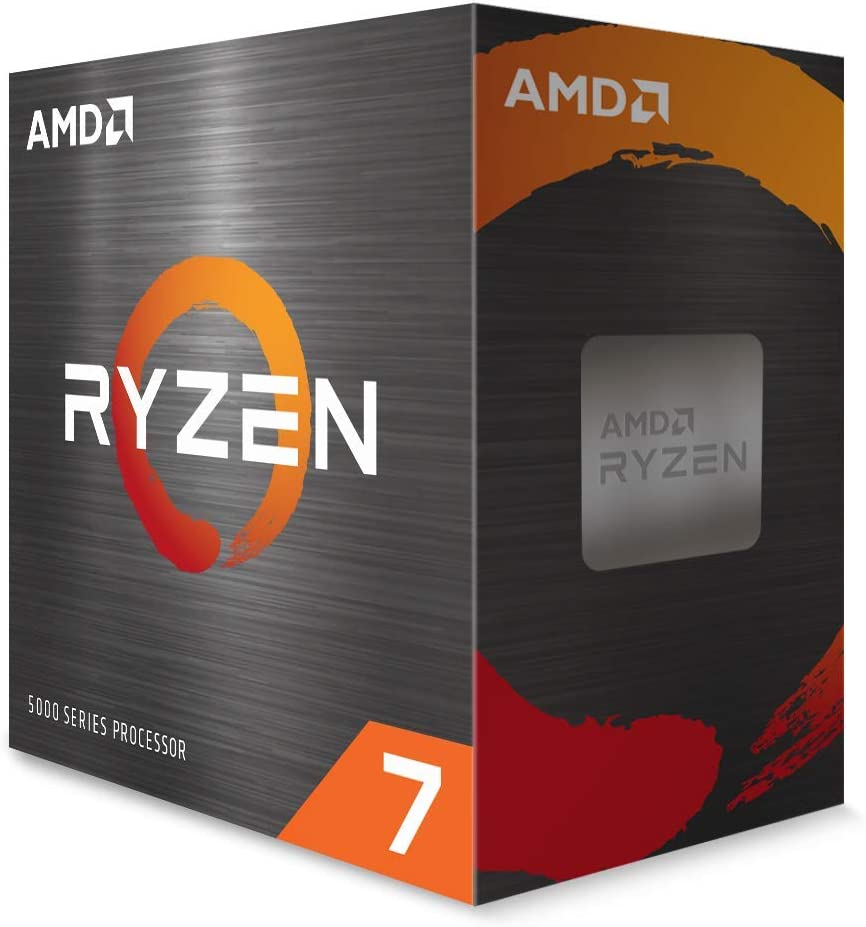
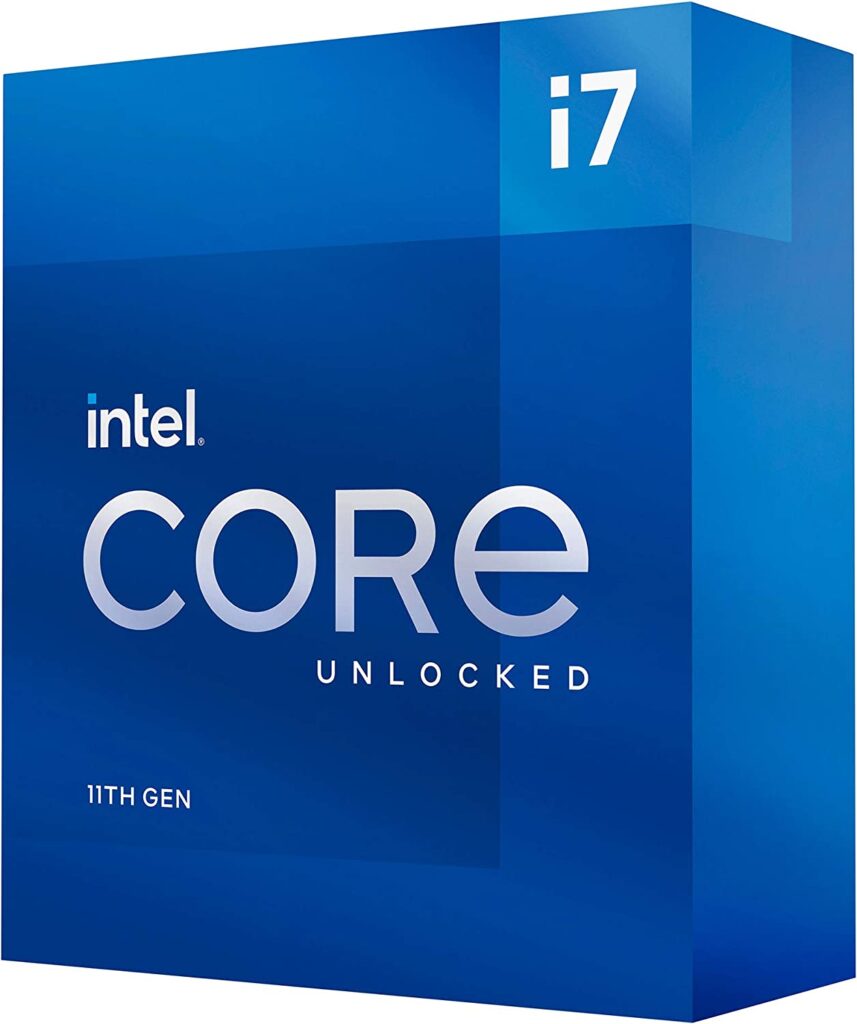
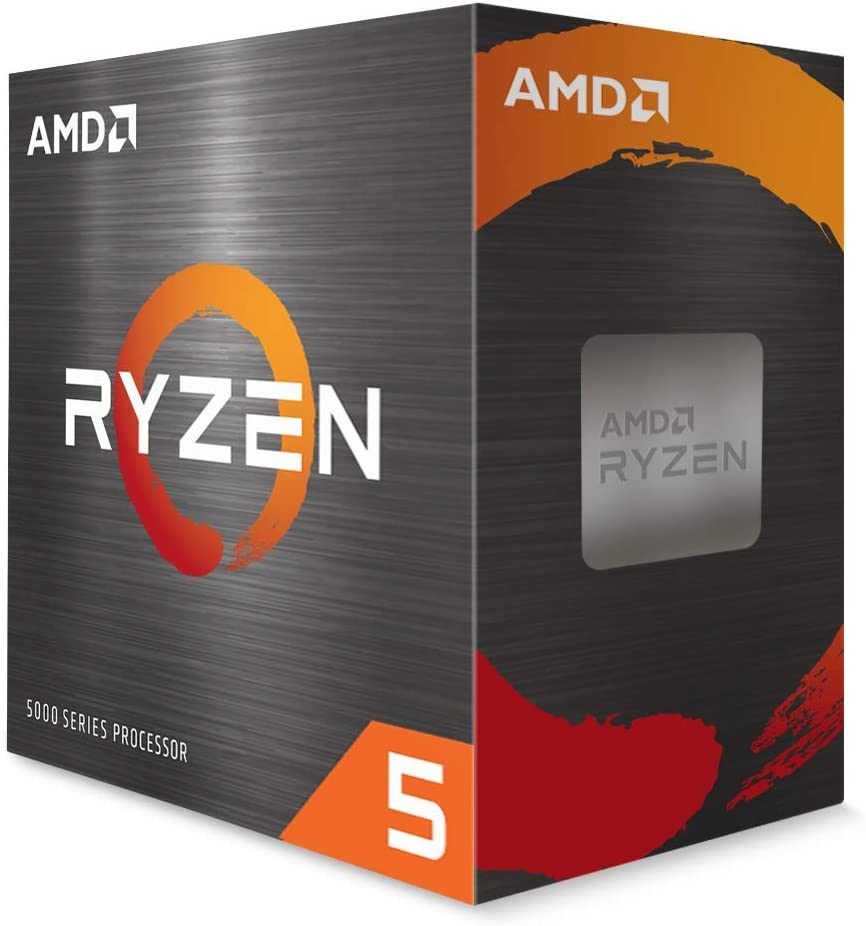
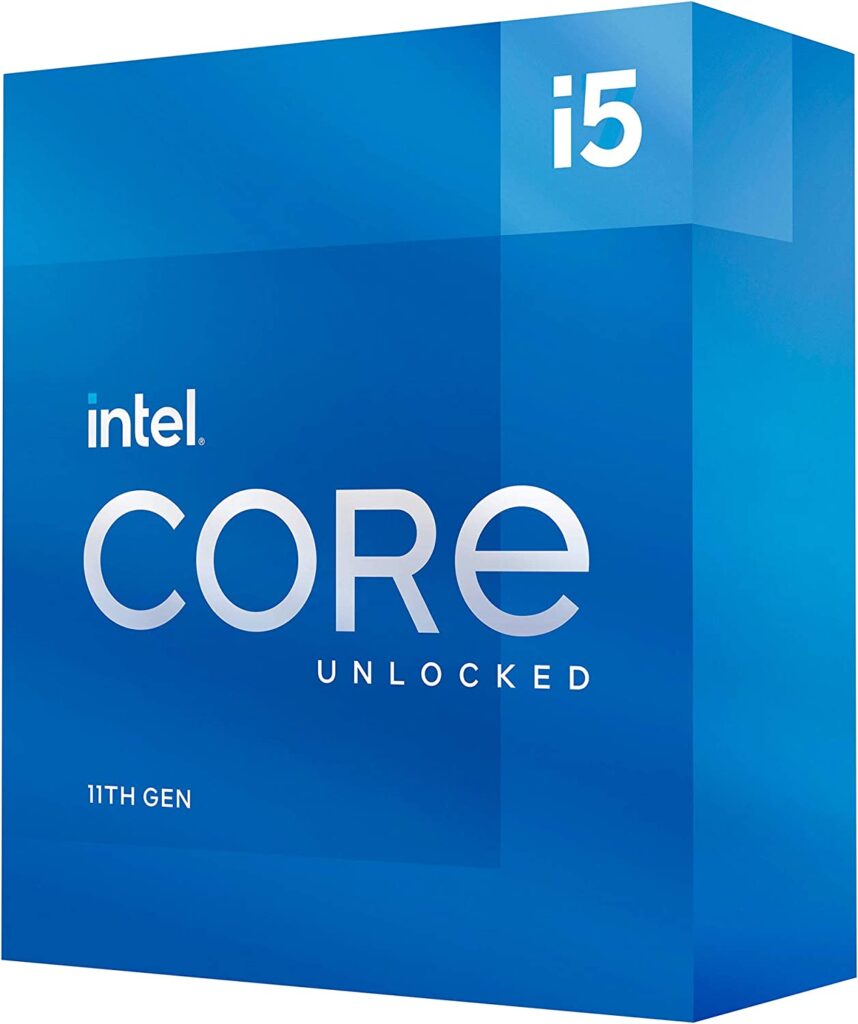
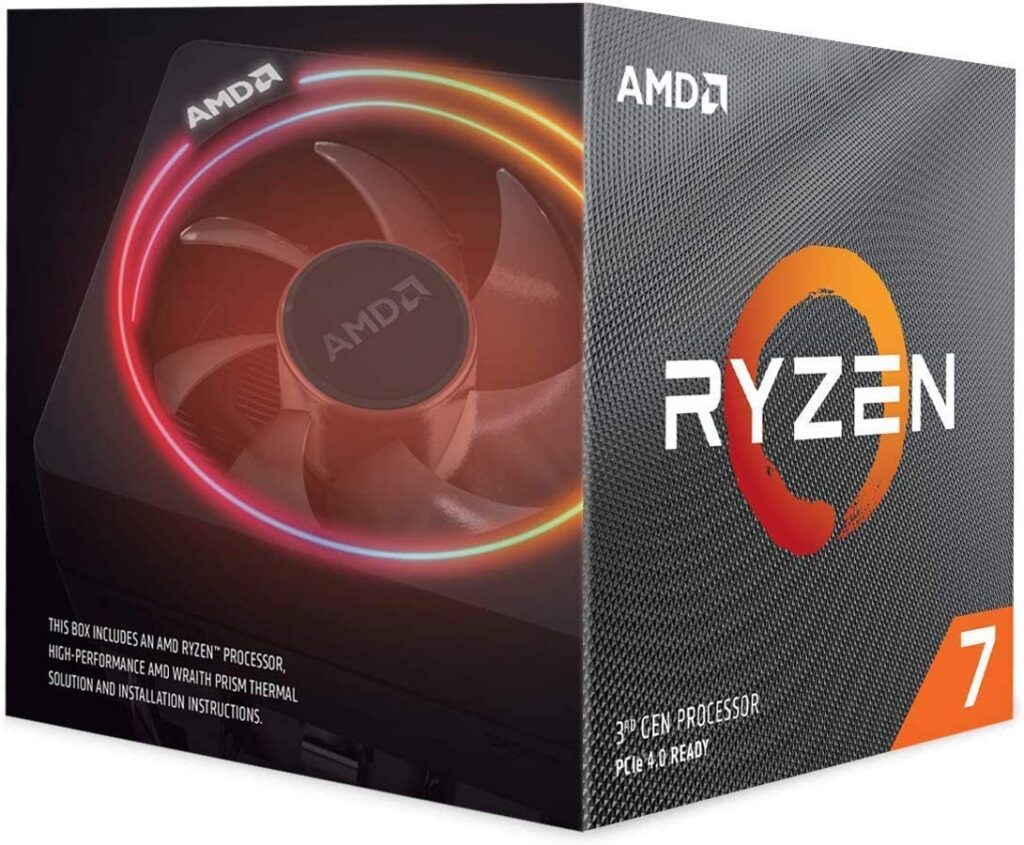
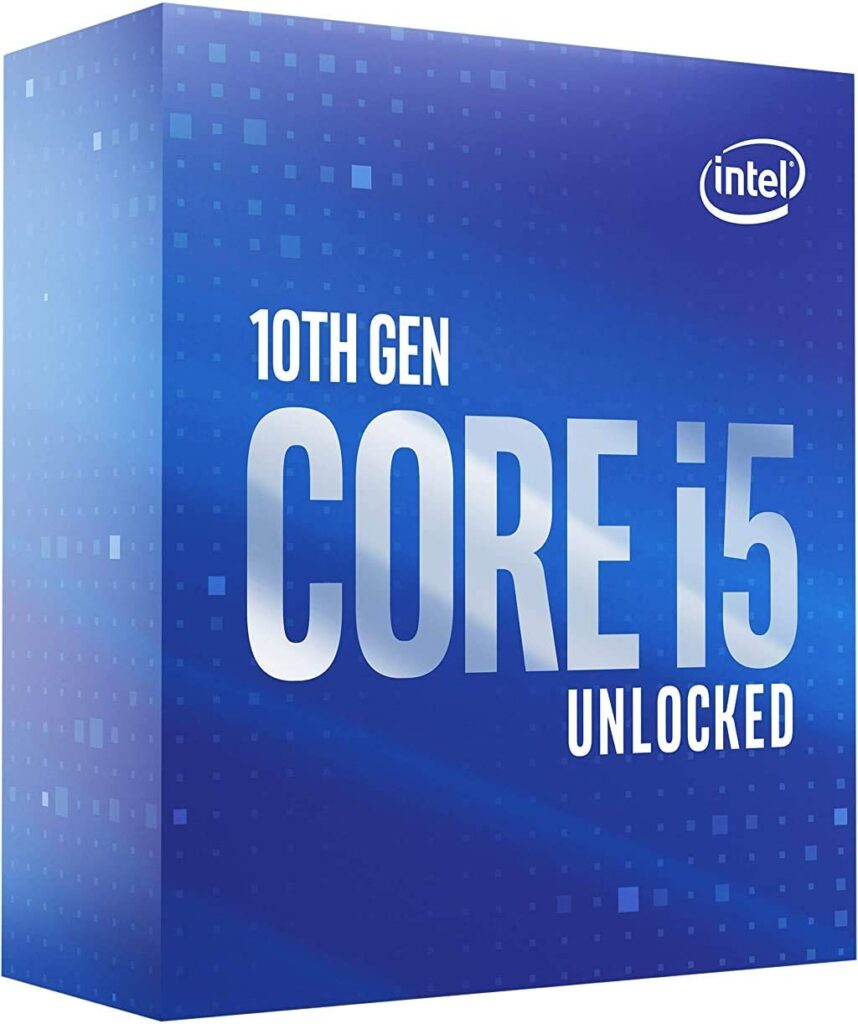
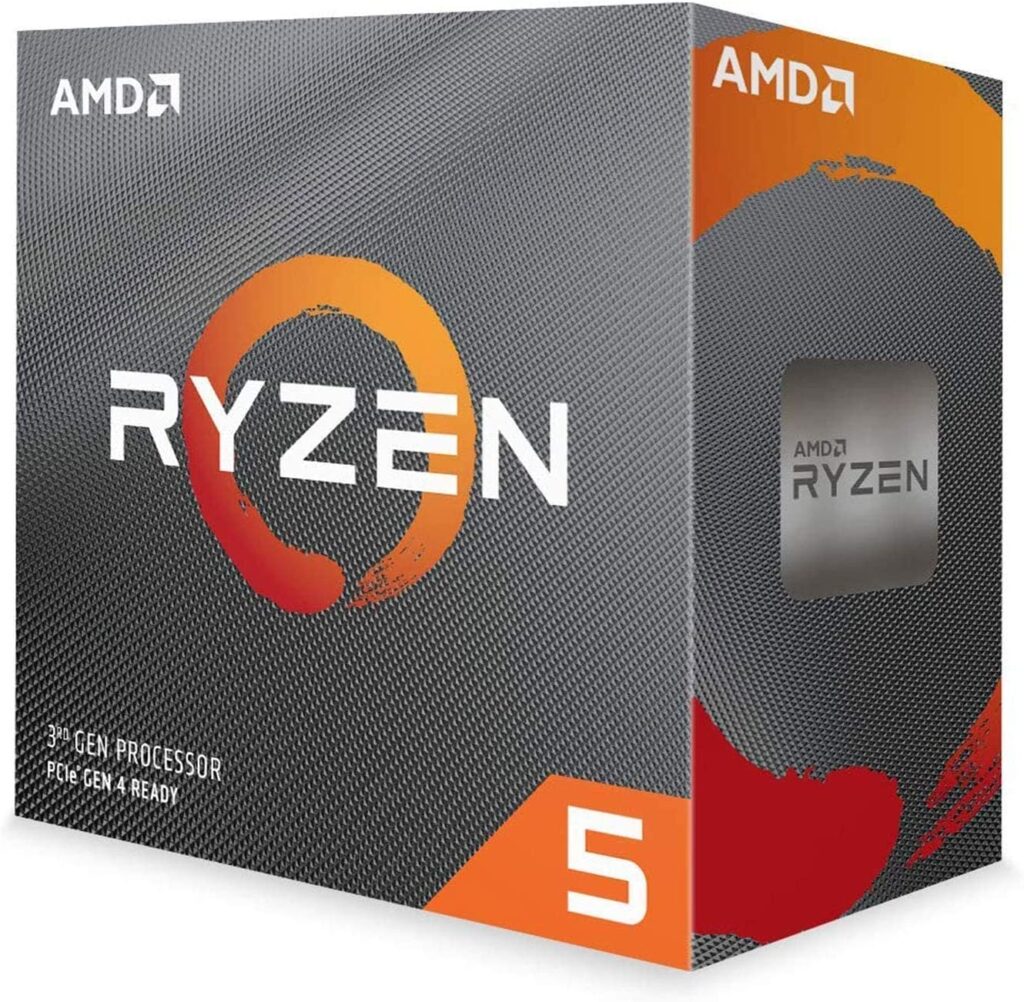
![Top 10 Best Ryzen CPU [List & Guide] Top 10 Best Ryzen CPU [List & Guide]](https://thebestcpu.com/wp-content/uploads/2023/02/photo-1629725413198-8cbebe94f3a2-300x200.webp)
![Top 10 Best CPU for Gaming [List & Guide] Top 10 Best CPU for Gaming [List & Guide]](https://thebestcpu.com/wp-content/uploads/2023/02/joseph-greve-BPJKc4r7_eo-unsplash-300x200.jpg)
![Top 9 Best CPU for Streaming [List & Guide] Top 9 Best CPU for Streaming [List & Guide]](https://thebestcpu.com/wp-content/uploads/2023/02/christian-wiediger-8WFcelVBOoI-unsplash-1-300x200.jpg)
![Top 8 Best CPU Air Coolers [List & Guide] Top 8 Best CPU Air Coolers [List & Guide]](https://thebestcpu.com/wp-content/uploads/2023/02/abdullah-abid-1bhQ-sxuOdU-unsplash-300x200.jpg)